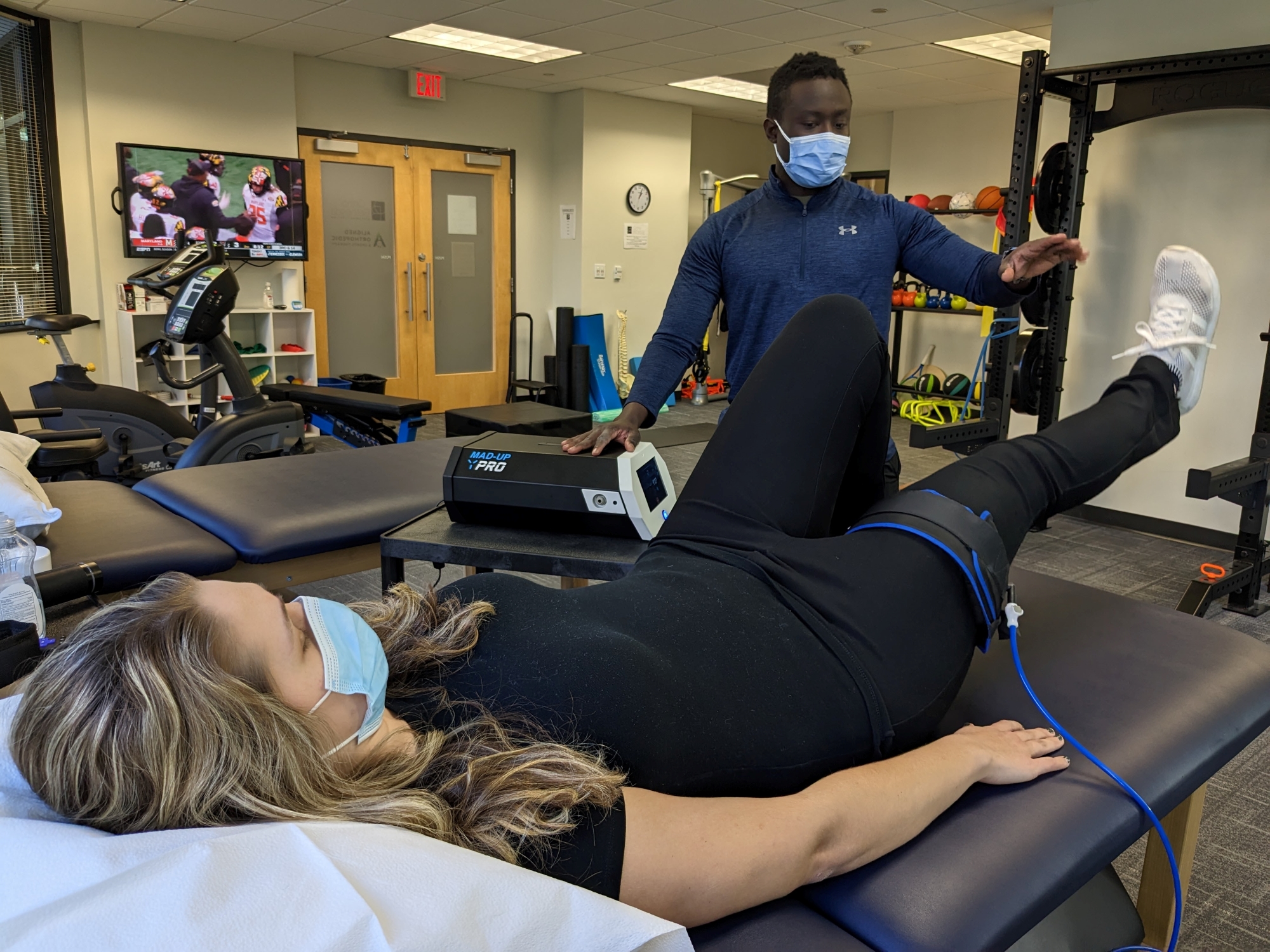Blood flow restriction (BFR) training is the brief and intermittent occlusion of venous blood flow utilizing a tourniquet system while performing exercises. This allows an individual to exercise at significantly lighter loads, while still creating a growth and strength response traditionally achieved with significantly heavier weights.
What are the benefits of BFR training?
Exercising using BFR allows an individual to use weights that are only about 20-40% of their 1 repetition maximum rather than needing to lift heavy weights to generate the same changes. Even though patients can exercise with lower weights, they will see beneficial changes in their muscles size, strength, and endurance.
There is also an increase in growth hormone and other positive anabolic muscle growth factors. In addition, there is an increase in muscle protein synthesis, which allows your muscles to grow. You should discuss with your therapist all possible benefits of BFR training and any possible concerns you may have.

During BFR training, your physical therapist will apply a tourniquet to either the top of your thigh or your arm depending on which area you are working on. These cuffs have pressure sensors built in, and both the pressure and cuff size will be individualized based off your specific measurements.
Patients will then perform their exercises while the cuff is inflated, occluding blood flow into the extremity. During that time, the patient may feel like their extremity is working very hard, even though they are lifting a light weight. This is due to the buildup of lactate in the extremity and is a desired response. Once you have completed the total number of repetitions and sets for that exercise, the cuff will be deflated before moving onto the next exercise. Patients will typically feel like they have gotten a heavy workout in by the end of the session, despite maintaining all applicable precautions and using light weights.




